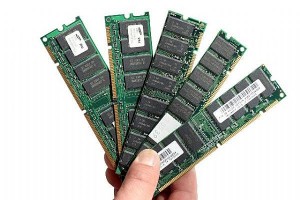The two critical components in all digital high speed cameras are sensors, which have to get rid of an image very quickly in order to capture the next, and memory, which has to accept data at a phenomenal rate.

Several different memory types are used.
- RAM in the camera. The majority of high speed cameras use high speed RAM (Random Access Memory), due to the ability to accept data at very high rates. The quality and grade of the RAM has to be high, which adds to the value of a camera, particularly the higher frame rate and higher resolution models. RAM is volatile, to the images need to be transferred to permanent memory (HDD or SSD etc) before power is lost. For this reason, many high speed cameras (including IDT’s NX-Air) incorporate a battery, increasing the integrity of the images.
- RAM in the PC. Some high speed cameras (including IDT’s M-Series) don’t include memory themselves, but record to the RAM of a PC via various interfaces (The M-series cameras use CameraLink). Because of the interface and the variable quality of PC’s RAM, the frame rates are restricted compared to the camera having its own RAM. After the recording, the sequence needs to be transferred to permanent memory as per the cameras RAM.
- HDD in the PC. Again, like PC RAM, the frame rate is restricted, as HDD cannot accept data at very high rates. High speed cameras configure to a PC’s HDD have the benefit of very long record times, even of the frame rate and resolution are not that high. SSD in the PC is slightly faster, but often cameras won’t frame faster as the system is configured for all PC’s in the same way. IDT’s M-Series can record direct to HDD or SSD of your PC, enabling very ling record times.
- SSD in the camera. Solid State Disk has the benefit over HDD of having no moving parts, so can accept data faster (not as high as RAM) and is rugged enough to be used in high speed cameras for Hi-G applications (crash tests etc). Still not as fast as camera RAM, but it has the advantage of being permanent. The capacity of SSD memory modules is higher than RAM, so longer record times are possible, but the rate that data can be saved to RAM is still higher, so for the highest frame rates/ resolutions, RAM is still the best choice. IDT’s new Os Series includes RAM and SSD, for the ultimate in versatility.
The RAM and SSD in IDT’s Os Series cameras offers several operation modes:
- RAM only. The Os Series camera operates just like a high speed camera which only has RAM
- SSD Backup. VERY fast downloads from RAM to permanent memory, releasing the RAM in the shortest time ready for the next recording, and ensuring the shortest time before the images are safe in case of power loss. Downloading the images starts even before the images have finished recording!
- SSD Streaming. Recording direct to SSD allows longer recordings, which are permanent straight away. Although this is a slower rate than recordings to the cameras RAM, is allows far higher rates than the direct-to-PC recording detailed above, and keeps the benefit that the camera can work alone, not being connected to a PC during filming. IE the camera can record long sequences with no PC connected in applications like car crashes, airborne tests etc.
The Os Cameras include 16GB RAM and optional up to 0.5TB SSD. The camera can also be programmed to perform a variety of the above modes sequentially for complex test sequences.
See details of the OS-Series Cameras
This article doesn’t talk about removable media (CF, SD etc). Contact us or comment below if you have questions on removable media
